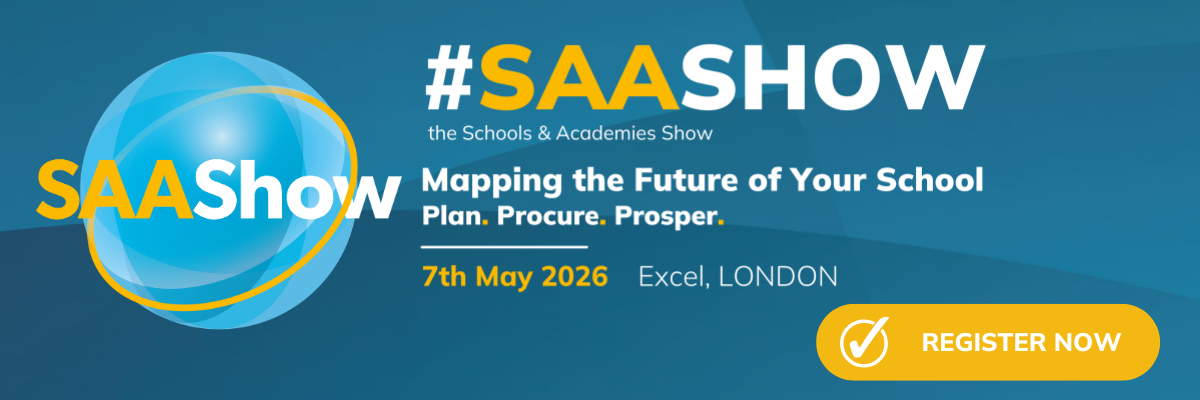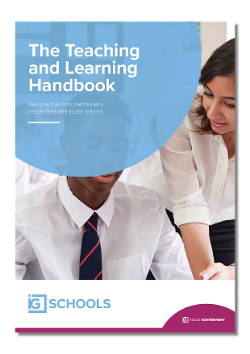How to Enhance Pupil Attainment Using a Horsforth Quadrant
Educational disadvantage is a deeply compounded issue; Daniel Sobel says schools that recognise this can ‘succeed in narrowing the gap’.
Here, Ellie Ryall, a Raising Standards Leader at Rednock School with responsibility for Key Stage 4, shares an innovative approach to raising pupil attainment across a Year 10 cohort, and how this has been adapted as a result of the impact Covid-19 has had on education.
RSLs bridge the gap between our brilliant pastoral and department teams to create and lead initiatives that support students academically and drive up attainment.
This year, we were keen to implement a proactive framework with fewer, high quality interventions based around the Horsforth Quadrant. This groups students by their effort and progress (see Figure One). The Horsforth Quadrant (HQ) was devised by Horsforth School, West Yorkshire, and developed further by PiXL (see GCSEPod for further details).
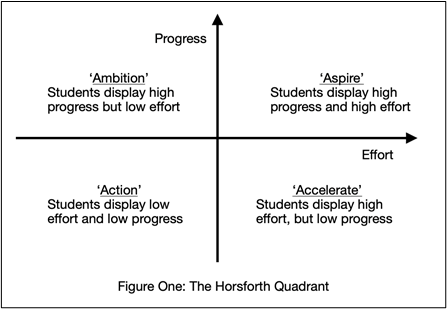
With thanks to our data team, the Horsforth Quadrant was generated by SIMs data, based on teacher awarded grades in comparison to their target grades (progress), attitude to and behaviour for learning (effort). Whilst this removes teacher bias, it does occasionally require manipulation to fit the right student with the right group! The ultimate aim is to move all students into ‘Aspire’, where they can be stretched and challenged in their learning.
I took time during the first term to build relationships with the students and research the most effective methods to raise attainment. I attended the 2020 National Pupil Premium Conference at which the importance of fewer, high quality interventions, underpinned by research, was stressed, as well as increasing attendance. Further research led me to metacognition, which could be wielded differently to fit the needs of the Horsforth Quadrant Groups.
Attendance
I launched Attendance Groups in November 2020. The NFER 2019 research states ‘P8 scores are highly sensitive to changes in absence rates for disadvantaged pupils. This suggests that small improvements in KS4 absence could potentially improve the outcomes of disadvantaged pupils’ more than small improvements in other areas.’ In November, there was already a stark difference between our Year 10 Pupil Premium (PP) and non-PP cohort: the average attendance for PP students was 89.5%, but 93.98% for non-PP students.
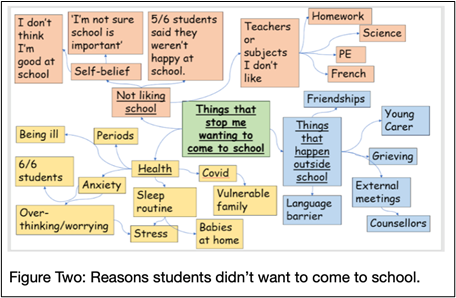
Selection was a careful process. In launching these groups, it was important that students were likely to succeed: I wanted to build upon successes thinking that gaining positive momentum for these students would help to change their mindsets around attending school. I identified 12 PP or disadvantaged students with attendance below 95%, who were not already receiving personalised support from our Attendance Officer or their Community Leader. Our Community system is our pastoral framework, similar to the traditional House systems. We favour the concept of Communities, which emphasise the importance, as well as the integrity, of belonging to, and participating in, many communities throughout our lives. Furthermore, our system celebrates the values of close-knit communities, which are further promoted by our close ties with our external communities.
When we met, we discussed reasons they didn’t want to come to school (Figure Two, above). Health - both mental and physical - was the biggest factor, with 6/6 students citing anxiety as a reason for avoiding school. Each following session would tackle one of these areas, and our attendance gains. 80% of the students had improved their attendance by at least 1% in the first fortnight.
The Horsforth Quadrant and the Motivated Strategies for Learning Questionnaire
The EEF cites metacognition as one of the best strategies for improving student progress: it ‘can be worth the equivalent of an additional +7 months’ progress when used well… The potential impact of these approaches is very high, particularly for disadvantaged pupils’. Therefore, I wanted to create initiatives based around metacognition for students in the ‘Ambition’, ‘Accelerate’, and ‘Aspire’ sections of the Horsforth Quadrant. Students in ‘Action’ receive personalised support from the pastoral team.
Further research led me to the Motivated Strategies for Learning Questionnaire (MSLQ). It was developed to measure students’ mindsets around and strategies for learning. In total, there are 15 different scales which I chose to use singly (see Figure Three): one for each group. Student progress would be measured by the questionnaire, as well as their effort and progress. The self-assessment tool is given for each group below.
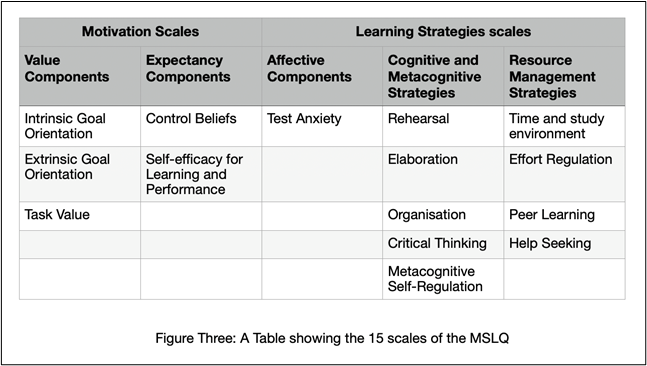
I created the initiatives to launch in January 2021: you will know the plot twist coming! Another National Lockdown was announced, with only vulnerable students and the children of key workers allowed to come into school. Instead of holding these initiatives face-to-face, I have launched them using Google Classrooms and Google Meets.
Ambition - (MSLQ - Task Value)
Students in Ambition are making progress, but not putting in any effort. Strategies for these students need to target their lack of effort to raise students’ engagement and motivation levels and address negative learning behaviours. I settled on the ‘Task Value’. Increasing student task value ‘should lead to move involvement in one’s learning’.
Students in the Ambition quadrant are currently in a Champions’ League. Four House teams, of 3-4 students, battle over a week for the highest number of points. They receive points from Reward Points and positive comments from teachers. Teachers are asked to input comments on a weekly basis by SLT. These comments range from attendance to online lessons, to contributions and effort in the lesson. Alongside the pastoral team, I call these students on a bi-weekly basis to update them on their progress, give them feedback and points totals. (In ‘normal school’, the teams would gather weekly for the final reveal of points!).
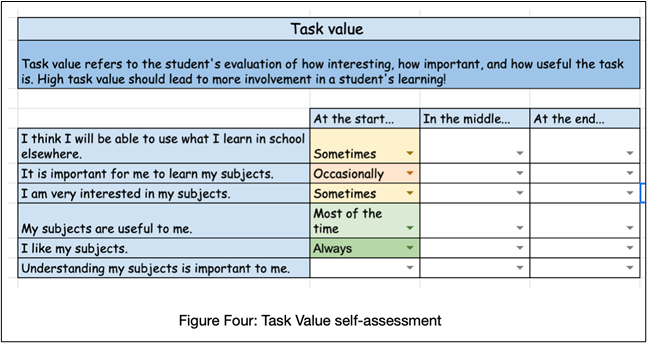
Aspire - (MSLQ - Critical Thinking)
Students in Aspire demonstrate high effort and make high progress and many are Gifted and Talented, who enjoy learning. I chose the ‘Critical Thinking’ strategy of the MSLQ, development of which will benefit all of their subjects. Students have started the AQA Higher Project Qualification: they have chosen their research topics - which range from the impact of dance on mental health to different countries responses to Covid. They will learn research skills and develop their communication skills.
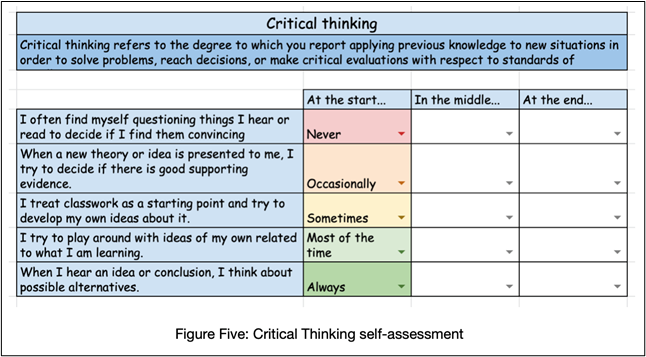
Accelerate (MSLQ - Organisation)
Students in Accelerate demonstrate high effort, but are not making expected progress. I chose the ‘organisation’ strategy of the MSLQ. Students meet me weekly via an online meet, and are taught independent study skills - which are currently crucial to success. These sessions have ranged from the Freyer model for keywords, active revision techniques and how to concentrate at home!
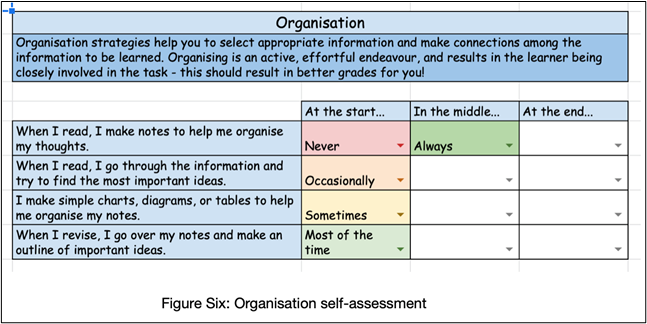
Looking forward
Of course the National Lockdown has impacted on these interventions. The Champions League faces the most barriers: these are students who are struggling to access remote learning resulting in fewer comments from teachers. However, the bi-weekly phone calls are hugely positive, and we work together to resolve barriers to learning: for example, we have made equipment packs available for PP students, as well as laptops. I’ve also started asking students what work they’re proud of that week - moving the focus away from targets, grades, and what they’re missing.
I have everything crossed that I can see our Year 10 cohort again in March. These interventions will segue into face-to-face interventions during tutor time, and the opportunities for engagement will only increase.
Further Reading
GCSEPod Case Study: Horsforth Quadrant
Sobel, D., Narrowing the Attainment Gap: 8 Insights to help you improve your strategy
Motivated Strategies for Learning
Ellie used the MSLG available here.
The Manual can be found here.
If you'd like to hear more on this topic then please consider registering your interest for our SAAS Show London in 2024 by clicking on the banner below:
Furthermore, explore more approaches to teaching and learning via the Schools Handbook, available for free download now.

